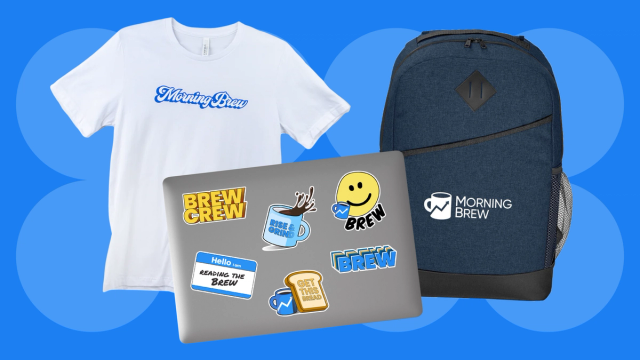In November, actor Walton Goggins of The Righteous Gemstones and Fallout fame got into the eyewear game, releasing five futuristic ski goggle–style glasses in bold colors with names like Cumulonimbus and Limoncello. They retail for $150 a pair. The shades—called Walton Goggins Goggle Glasses—were swiftly covered by the press. “Yes, Walton Goggins really launched an eyewear line called ‘Goggins Goggles,’” a headline from GQ reads. Last week, it was revealed that the goggles would be featured in an elaborate Super Bowl campaign for the web services company GoDaddy, which made a name for itself in the early aughts with provocative and sexist Super Bowl ads. Fara Howard, GoDaddy’s CMO, told Marketing Brew that the campaign was “not a stunt” but said the company helped Goggins “birth his idea” for the glasses after it decided to enter the big game last year. Maggie Gallant, a spokesperson for Goggins Goggles, said that the actor came up with the idea for the product line prior to working with GoDaddy on the campaign. After the announcement, the Goggins Goggles website began to feature a banner highlighting GoDaddy’s AI-powered tools, with an invitation for visitors to try it out for themselves. So yes, Walton Goggins really has an eyewear line called Walton Goggins Goggle Glasses—and it was part of a Super Bowl ad. Made you look: GoDaddy isn’t the first advertiser to leave a trail of breadcrumbs leading up to the Super Bowl. - Last year, Michael Cera was photographed holding bags of CeraVe lotion as part of a faux-outrage campaign leading up to its big-game reveal.
- In 2023, Mars announced that its M&M “spokescandies” would be placed on an “indefinite pause” ahead of the big game following a rebrand, a decision covered by outlets like the Wall Street Journal before the mascots were brought back.
Tim Calkins, a professor of marketing at Northwestern’s Kellogg School of Management, said that the unpredictable and high-stakes nature of the Super Bowl means brands are looking for inventive ways to stand out among competitors without revealing too much about their ads. “You want to generate excitement without giving away the story,” Calkins said. “You also don’t want people to feel duped or totally misled, or if they are going to be duped and misled, it’s in the nicest kind of way.” Continue reading here.—RB | 










